S. orientalis was first described by Greuter as S. vomeracea subsp. orientalis but subsequently promoted to full species status Baumann and Kunkele in 1972. Its name is a reference to the orchids easterly distribution in the Mediterranean.
Its full range is not completely understood due to confusion with close relative S. carica, to which it bears a resemblance. It is however known with certainty from Crete, southern Greece and much of the Aegean. S. orientalis is a localized species but can be abundant in its favoured locations, this generally being a dry position in full sun, on alkaline soils. It is a distinctive orchid, especially when in its anthocyanin depleted orange/yellow form but where its colouration is the commoner red, it may be confused with S. carica, a species with a modest overlap of range in the Aegean. A key feature differentiating these two, is the length of the bract, which in S. carica is shorter than the hood and in S. orientalis, is at least equal in length, often marginally longer. The former also exhibits a significantly wider, hairier, darker coloured epichile and is far less likely to be hypochromatic or anthocyanin deficient.
These commonly encountered conditions produce striking pale yellow or orange flowers and in some areas are more numerous than their typically coloured brethren. As with most Serapias species, hybridization is frequent and intermediate populations prevalent. S. orientalis maintains a varietal outpost in Sicily with siciliensis and in Crete, together with some other parts of southern Greece, cordigeroides, a particularly handsome variety which is so named because of the contrasting S. cordigera like darkness of its lip.
The illustrations are from Crete, Lesbos and the Peloponnese, dating from early April.

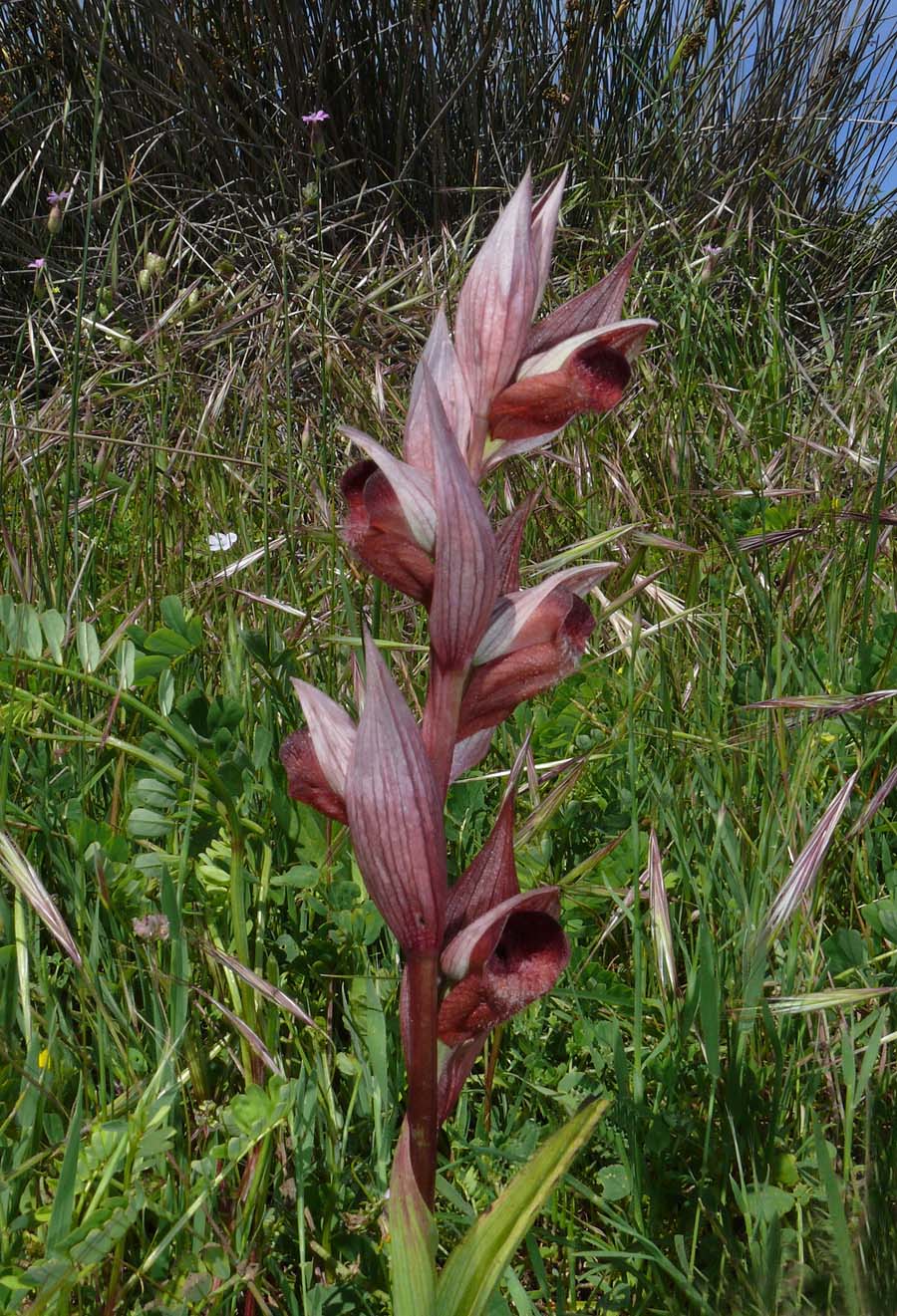
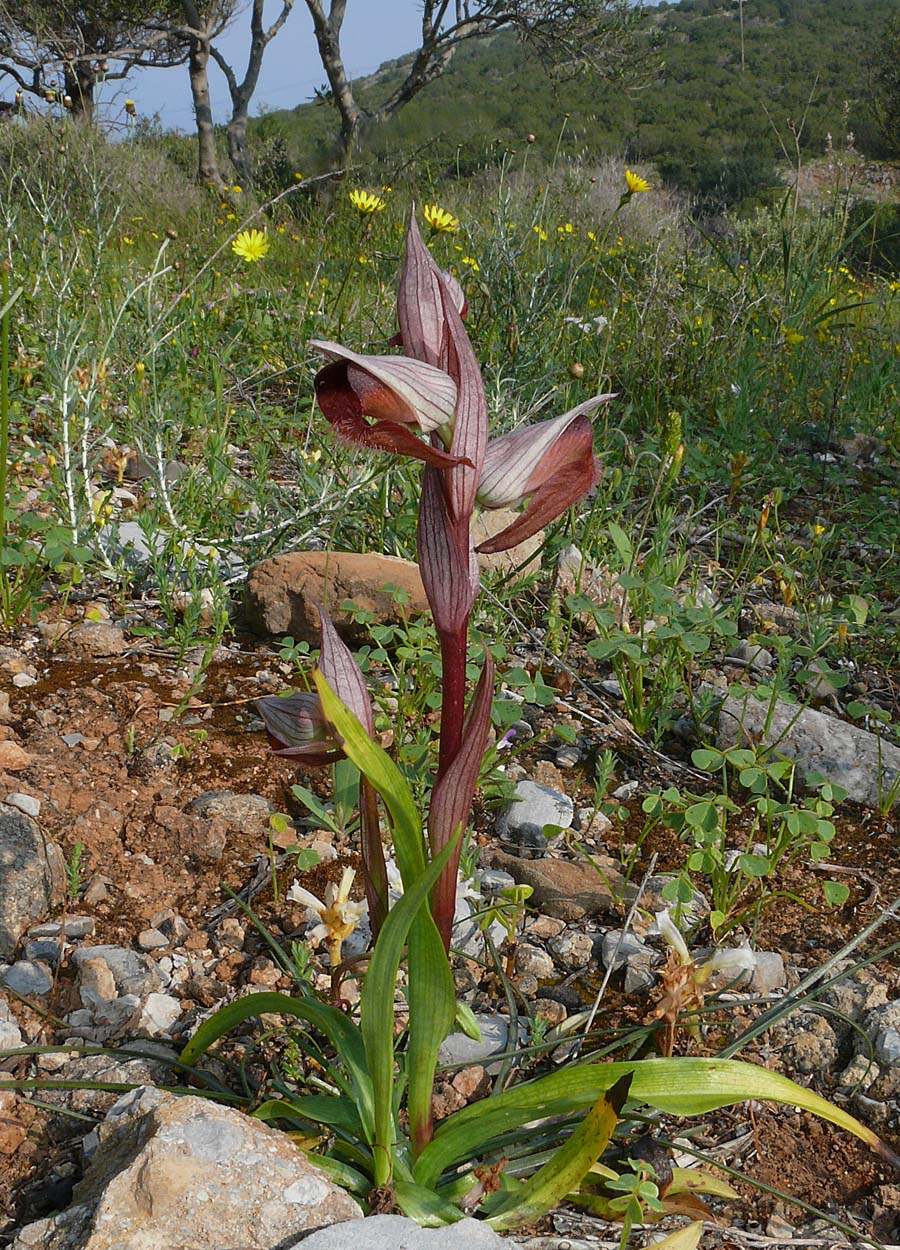
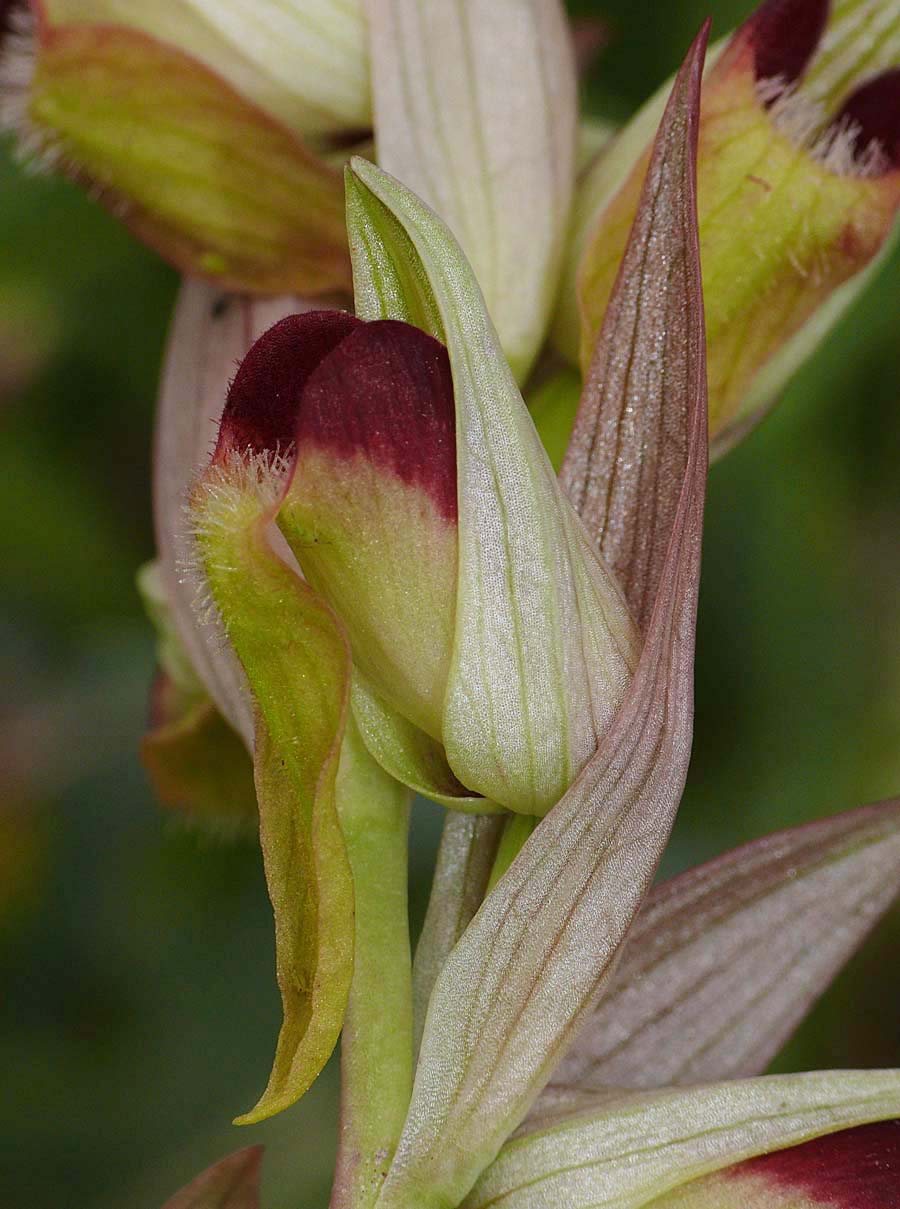


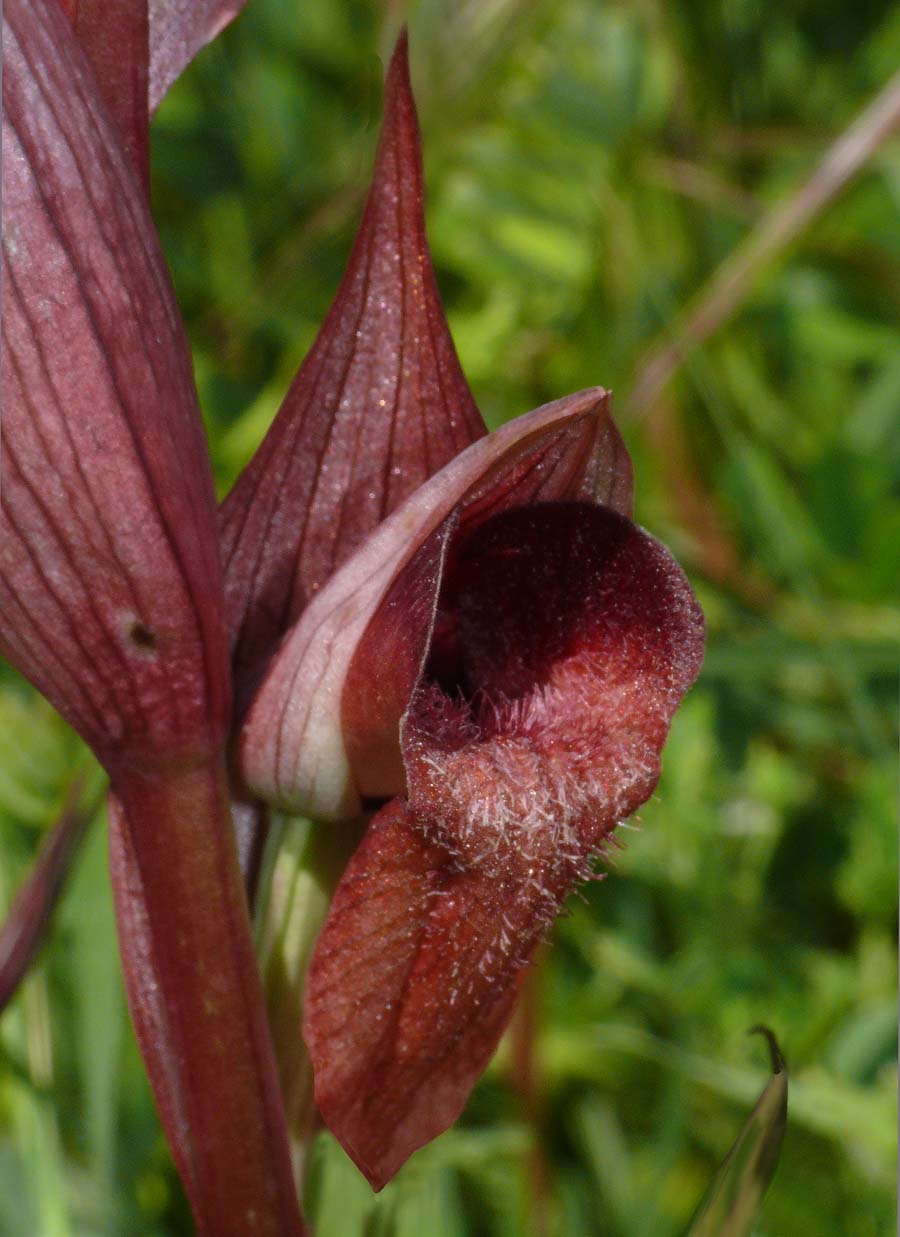
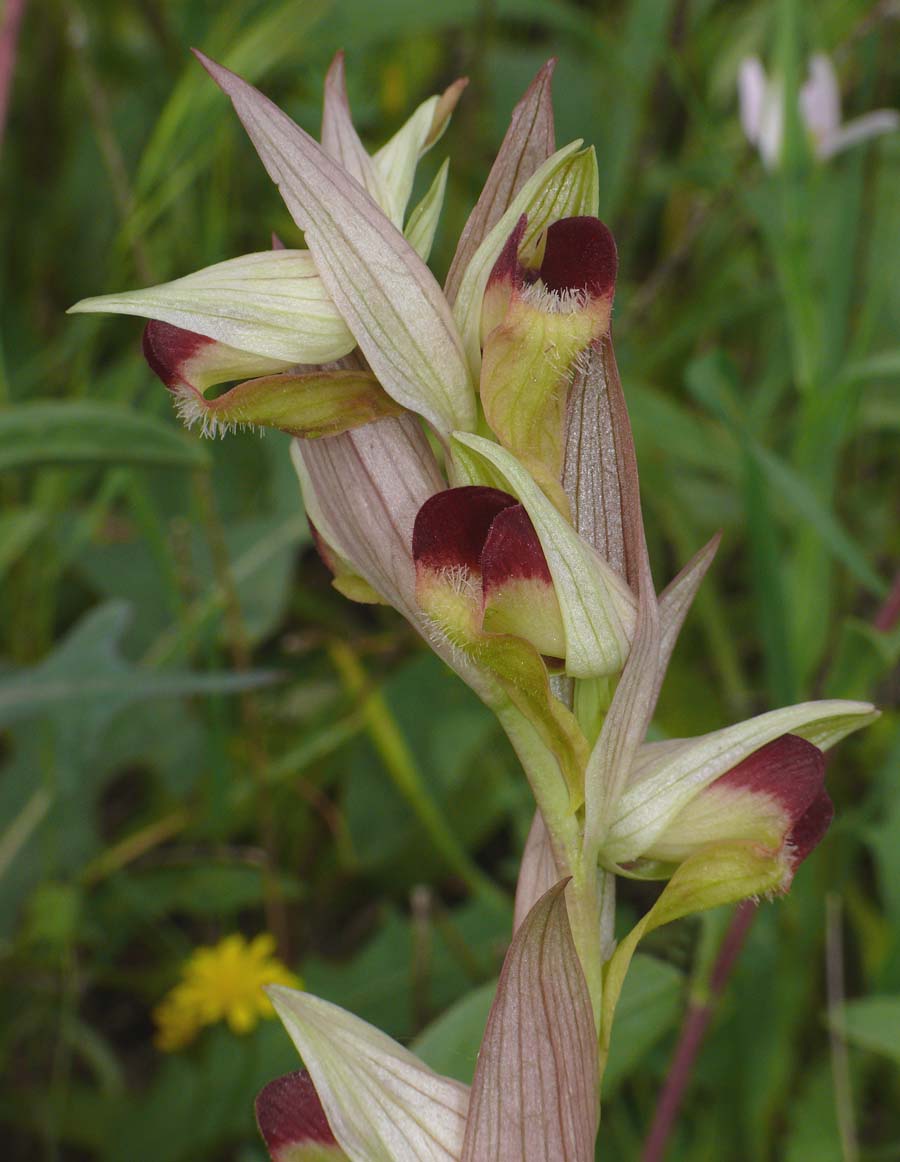

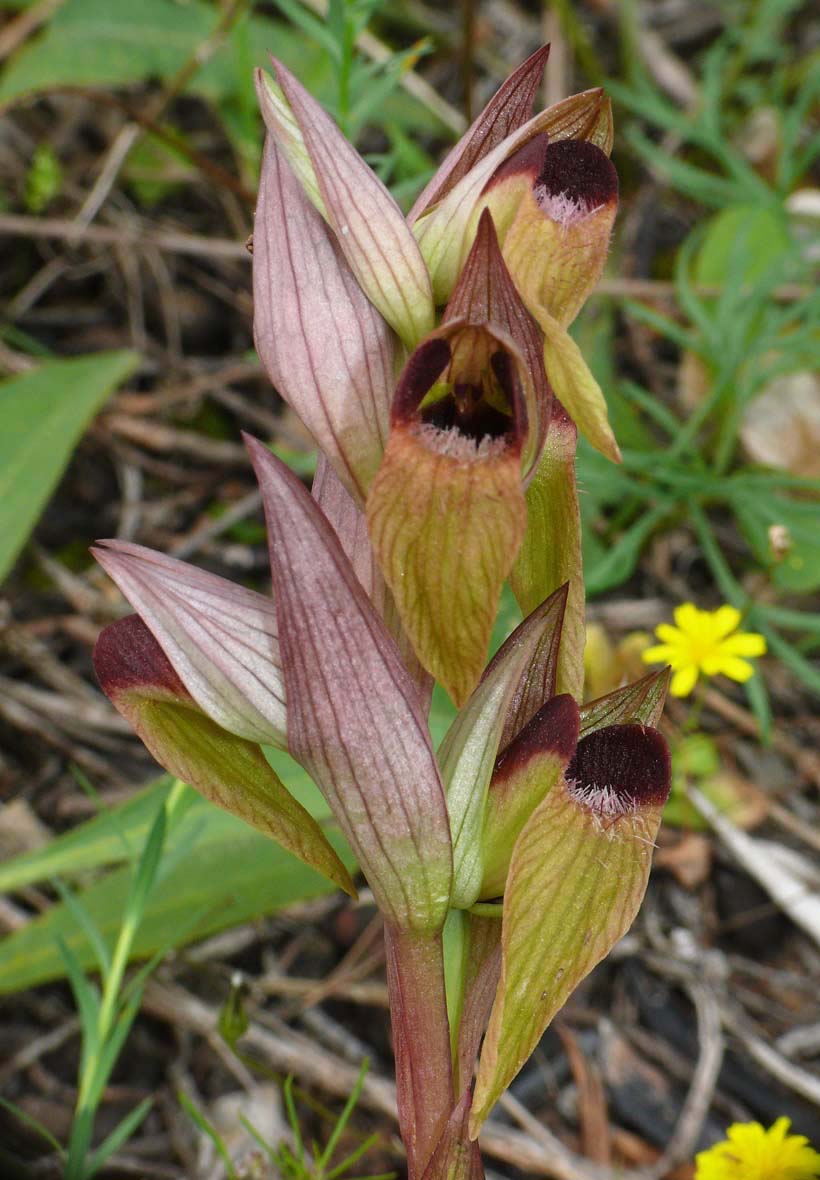
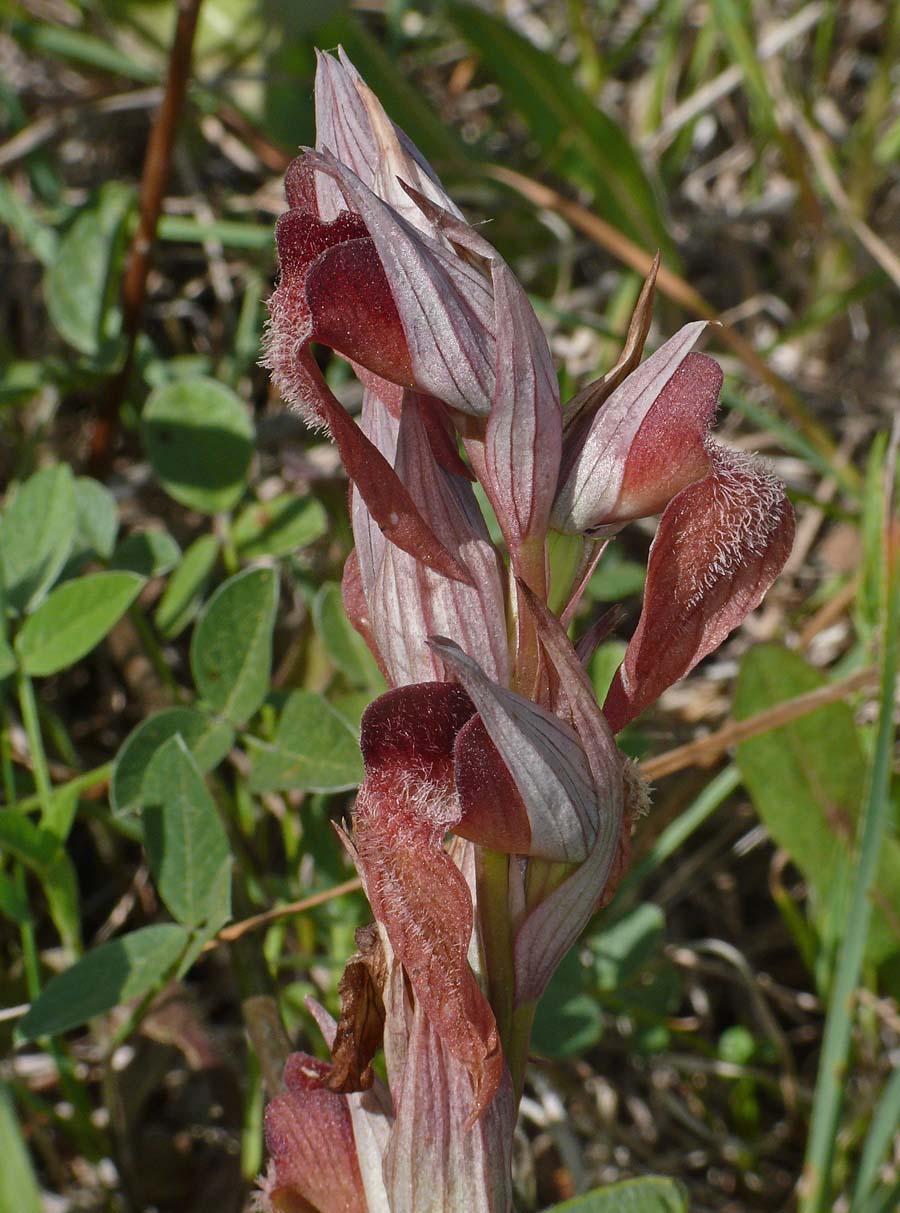

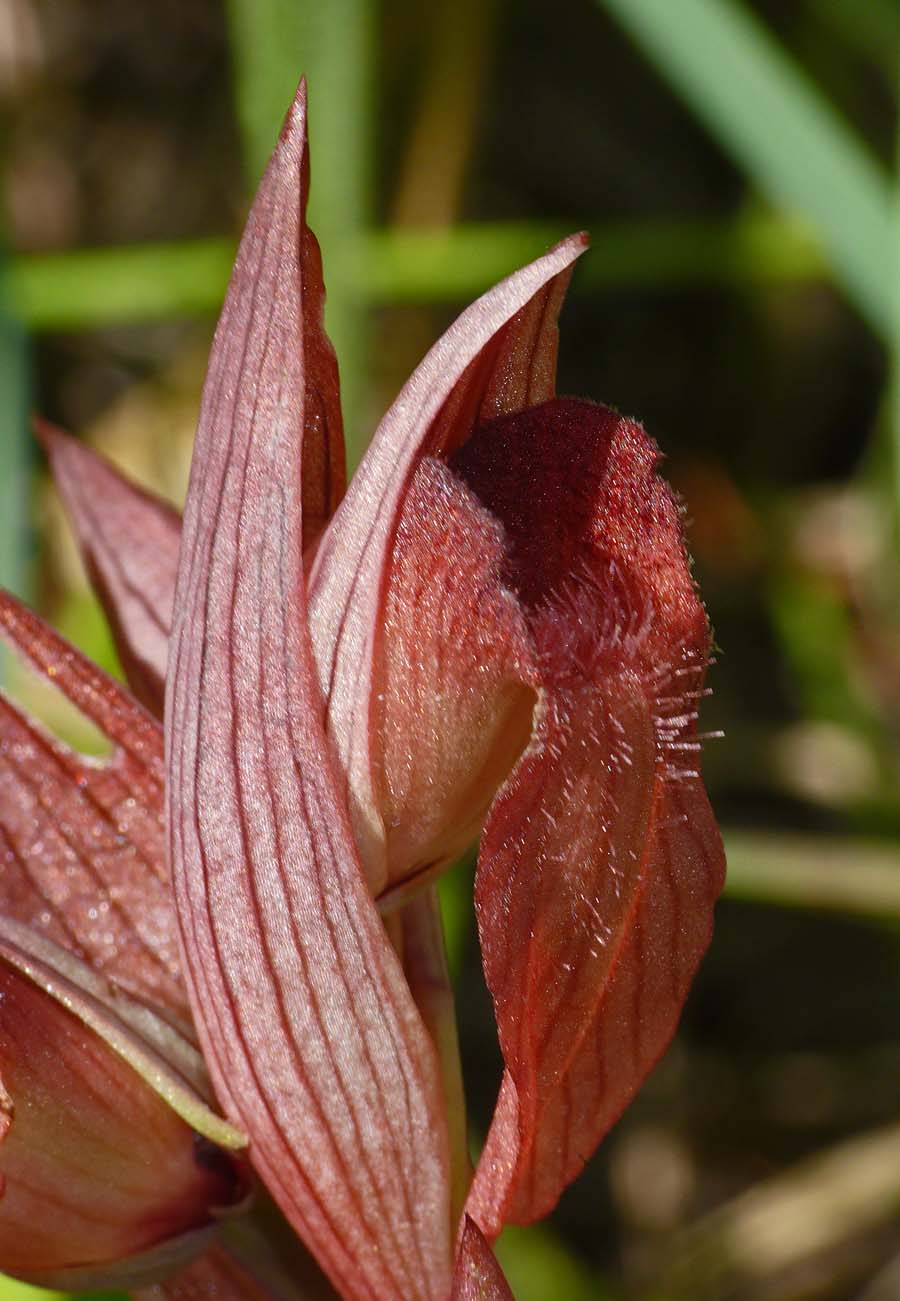

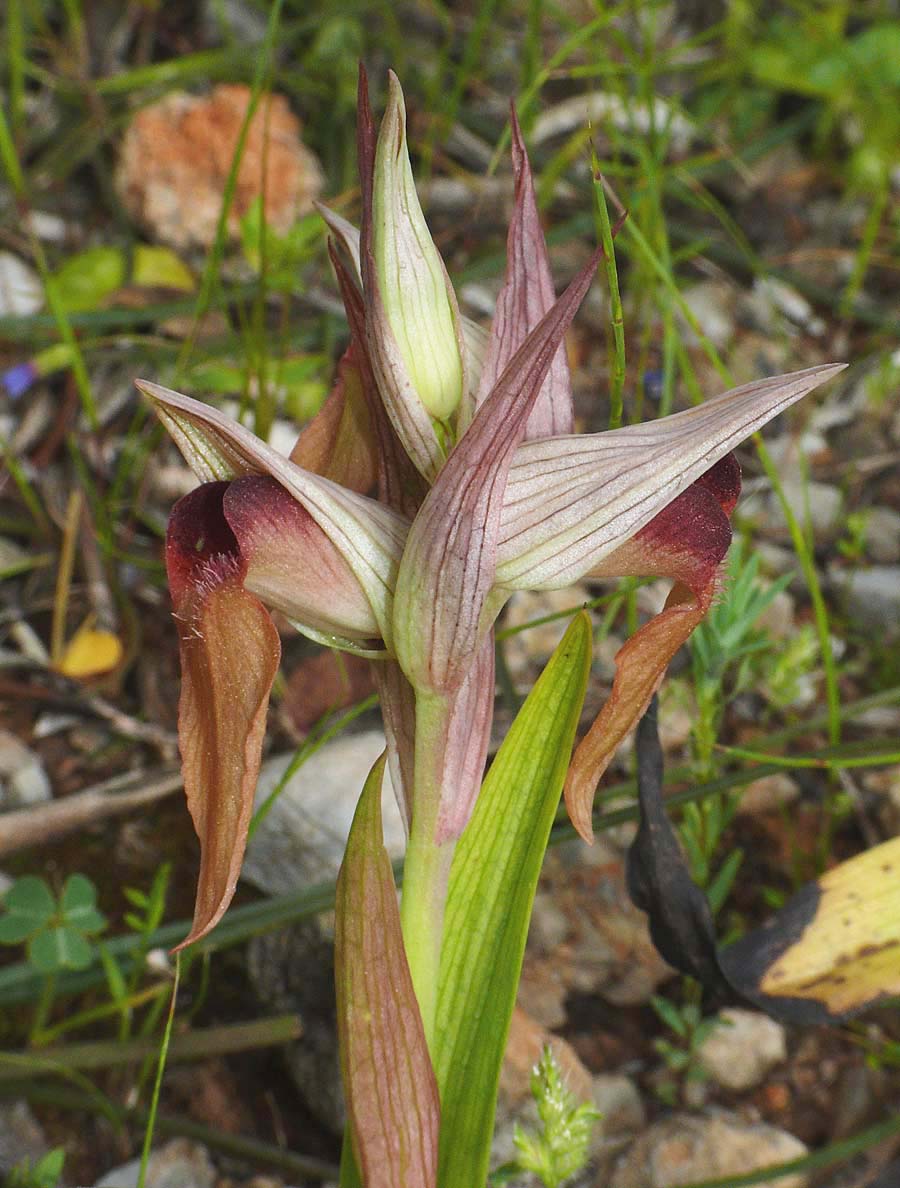
.